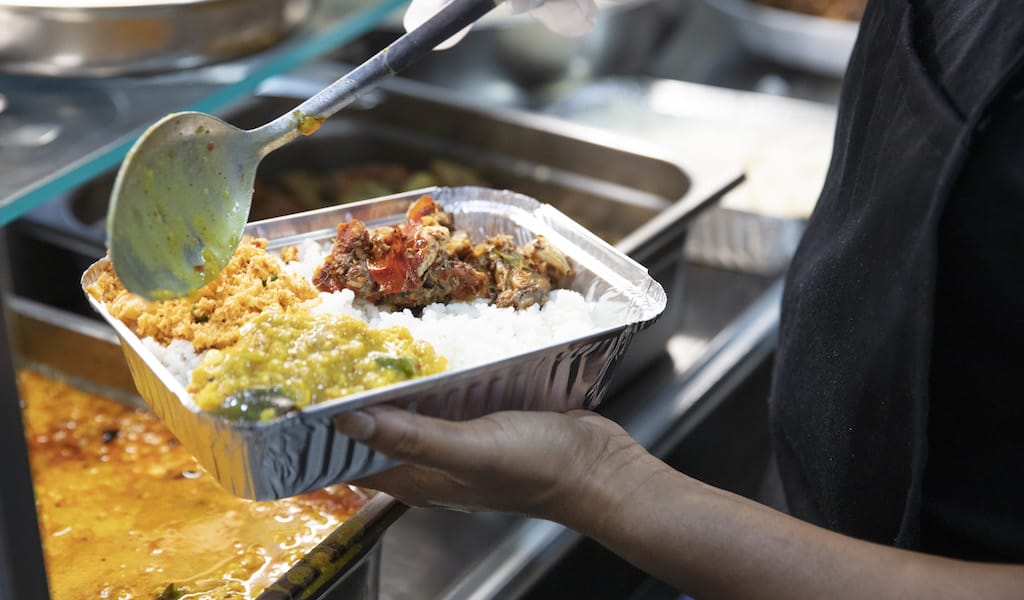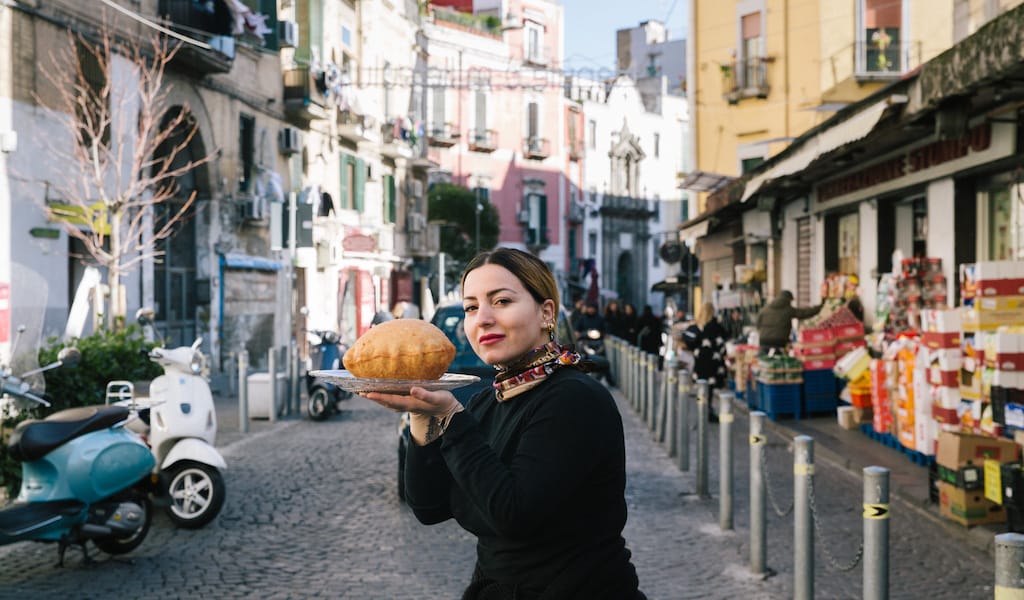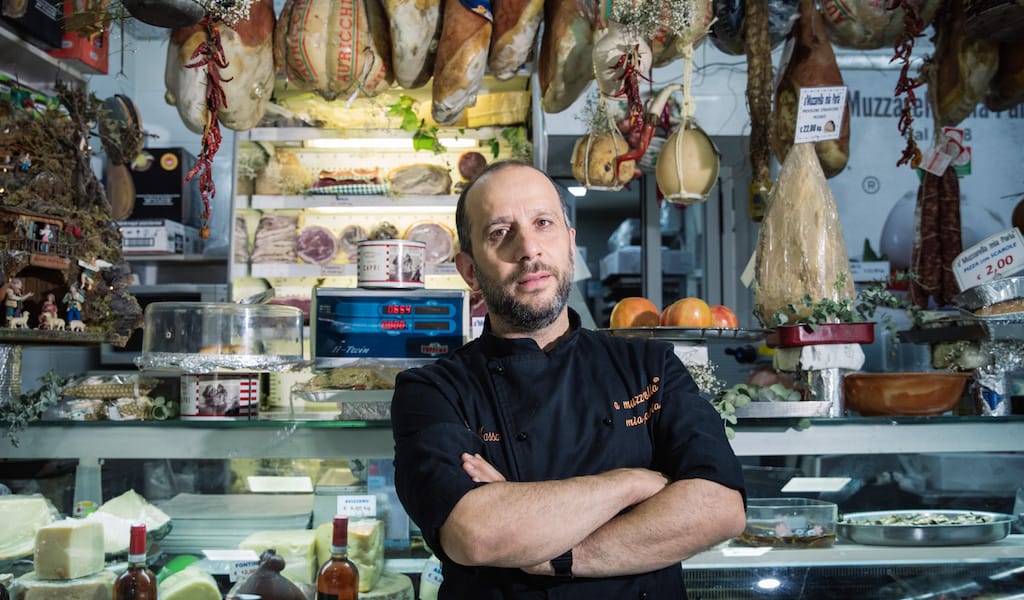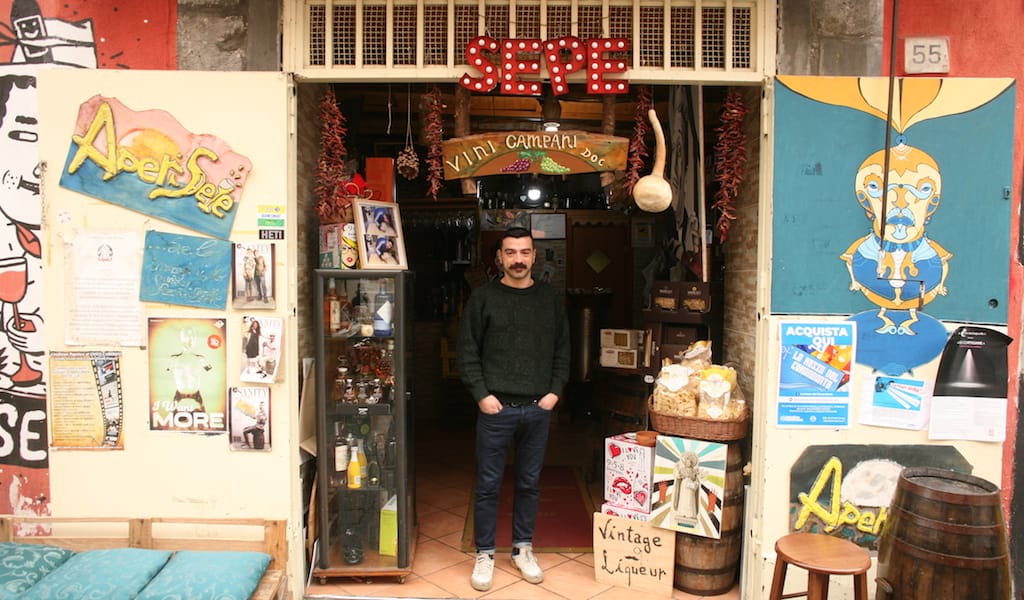On Sunday around lunchtime, the streets of Sanita can get almost eerily quiet. Where normally children play, scooters zoom past, shopkeepers haggle loudly with old ladies, and neighbors stick their heads out of their windows and discuss the latest gossip, suddenly nobody is to be seen or even heard.
Sanita is still a very traditional working-class neighborhood in the heart of Naples, and tradition has it that on Sunday afternoon everybody feasts: The whole family gathers around mama’s table for an hours-long lunch. If you happen to wander Sanita’s deserted streets at that time of the week, you’ll constantly catch whiffs of familiar smells: frying garlic, roasting onions, and meat simmered in sauce for many hours. And, more and more often, the tempting, spice-scented smell of curry.
In the past 25 years, Naples has gained a sizable Sri Lankan population. Starting in the mid-90s, members of the island’s Sinhalese Catholic minority moved here to work as domestic workers and caretakers for the elderly. Today, most Neapolitans claim that Sri Lankans make up the largest percentage of the city’s immigrant population. It’s hard to verify, but they are certainly the most visible.
Indeed, some parts of Naples feel so similar to Colombo, the Sri Lankan capital, that one Sri Lankan waiter remarked, “Sometimes I think I am still in Sri Lanka.” On a recent stroll through Sanita we even came across a bunch of young Sri Lankan boys playing cricket behind a coffee shop.
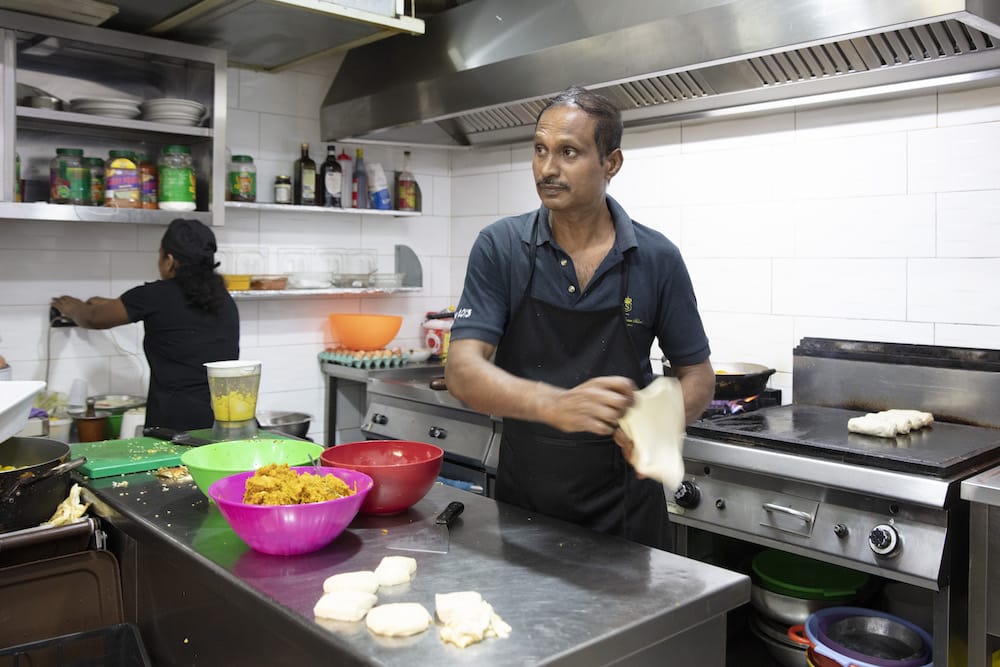
In the shops around Piazza Cavour, where a lot of Sri Lankans have settled, boxes of coconuts are piled up next to opened sacks of rice; crates with bitter gourds, winter melons and string beans spill out onto the street; fresh curry leaves lie next to branches of the hummingbird tree, an important spice in Sri Lankan cooking; and the shelves are packed with little bags full of coriander seeds, the famous Sri Lankan cinnamon bark, and bright yellow turmeric powder. Even samba, an unusual Sri Lankan variety of rice with a distinct smell, can be bought here.
Snack stalls sell Sri Lankan take-away classics (or what they call “short eats”) like flatbreads, folded and filled with curry; deep-fried stuffed rolls (called “Chinese rolls”); and ulundu vadai, spicy lentil donuts. If they have tables, you can stay for a plate of kottu roti, roti bread that has been chopped, spiced and fried, and a cup of heavily sweetened hot tea. Or, of course, rice and curry, Sri Lanka’s national dish: a large plate of rice topped with five different curries, normally four vegetables, one meat and a dry-fried fish or dry-fried chile.
Given their rich culinary heritage, Neapolitans are rarely interested in anything but Neapolitan food, and have no stomach for hot chiles. As a result, Sri Lankan restaurants cater almost exclusively to fellow Sri Lankans (and the occasional expat or tourist who craves truly spicy food), and their cuisine is not toned down to fit Western palates: from bitter gourd stews that live up to the vegetable’s name to sour curries cooked with dried fish, and carrot or coconut sambals (a sort of Sri Lankan salsa) so spicy they make your nose run. For Sri Lankans, it’s the taste of home. For all others it is a wonderful opportunity to sample food you’d otherwise have to travel to the other side of the world for.
Sri Lankan cooks fling flatbreads with the same grace as Italians do their pizzas – no wonder quite a few pizza places have Sri Lankan pizzaioli.
Sri Lankan food is heavily dependent on coconut: Every second dish is seemingly cooked in coconut milk or seasoned with fresh or dried coconut flakes. Curries are almost always very spicy but apart from that quite varied – some are bright yellow with turmeric or red from cayenne pepper powder while others are soured with lots of tamarind or sweet and creamy from coconut fat.
Curry leaves, coriander and ginger are found in most of them. Special Sri Lankan seasonings include Maldive fish, a dried fish that serves a similar purpose, flavor-wise, as Asian fish sauce (or Italian colatura), and goraka, a dried fruit used to sour curries. Apart from rice, different kinds of flatbreads are popular, which Sri Lankan cooks fling with the same grace as Italians do their pizzas – no wonder quite a few pizza places in Naples have Sri Lankan pizzaioli.
Naples’ most famous Sri Lankan restaurant – and one of its oldest – is hidden in the Spanish Quarter, on the second floor in an unassuming apartment building. Lena’s Rice and Curry has been in operation for 20 years, yet there’s still no sign on the door – only a Sri Lankan flag hung off a little balcony gives it away. Climb up two flights of stairs, and you’ll find the owners in their little kitchen, serving rice and curry in a refurbished living room.
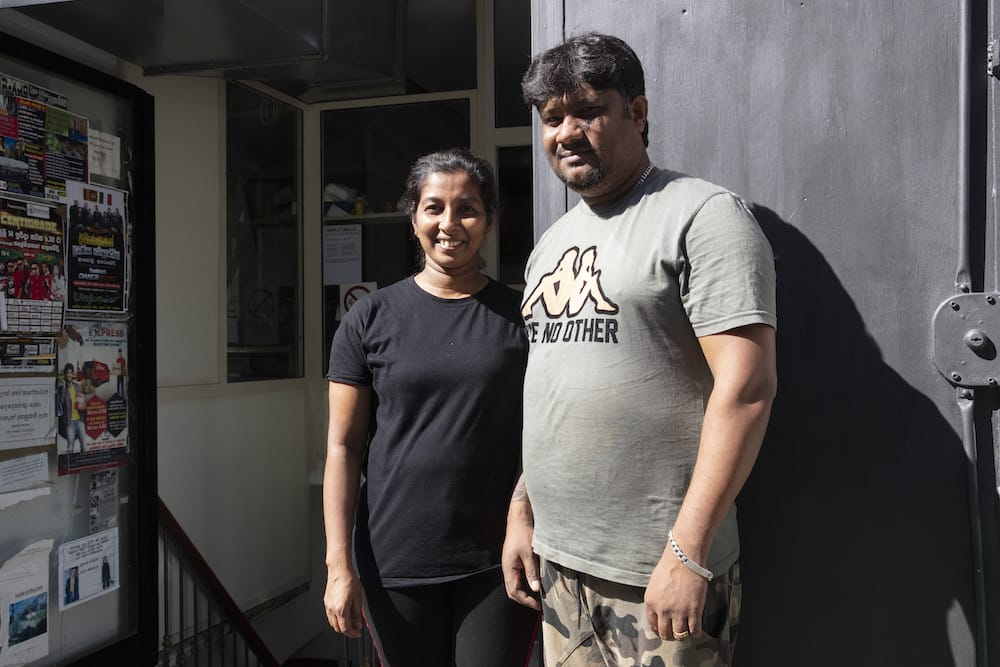
The food here isn’t bad, but we prefer to head a few hundred meters north to Piazza Cavour for our rice and curry fix. At the Grand Ceylon Restaurant and Banquet, husband and wife team Prasana and Ghethani and their employees serve one of the best kottu roti in town – this chopped fried flatbread, a Sri Lankan street food classic, is fatty, spicy and deeply satisfying. They also do an excellent roti filed with fish curry for take away.
Their curry offers change daily, depending on what Ghethani has bought at the market: There will always be some sort of fish, pork, and beef curry, and at least four different veggie curries. We highly recommend brinjal, their excellent eggplant curry. At lunch and dinner, curries are served over rice, but come in the morning and you’ll get them with string hoppers, thin rice noodles and a classic Sri Lankan breakfast staple.
Just around the corner, on Via Mario Pagani, is Shabarish, a self-described “Indian and Sri Lankan restaurant.” A real treat here is apple curry, a delicious diaspora dish imitating Sri Lankan fruit curries but substituting the more readily available (and much cheaper) apple for tropical fruit. The restaurant also serves wonderful dosas, a kind of south Indian rice flour pancake, freshly cooked to order. The same family runs the well-stocked food shop next door. If you happen to visit on a Saturday when all the fresh produce arrives from Sri Lanka, you can marvel at a fridge full of fifty shades of green: from melons to bitter gourds to string beans.
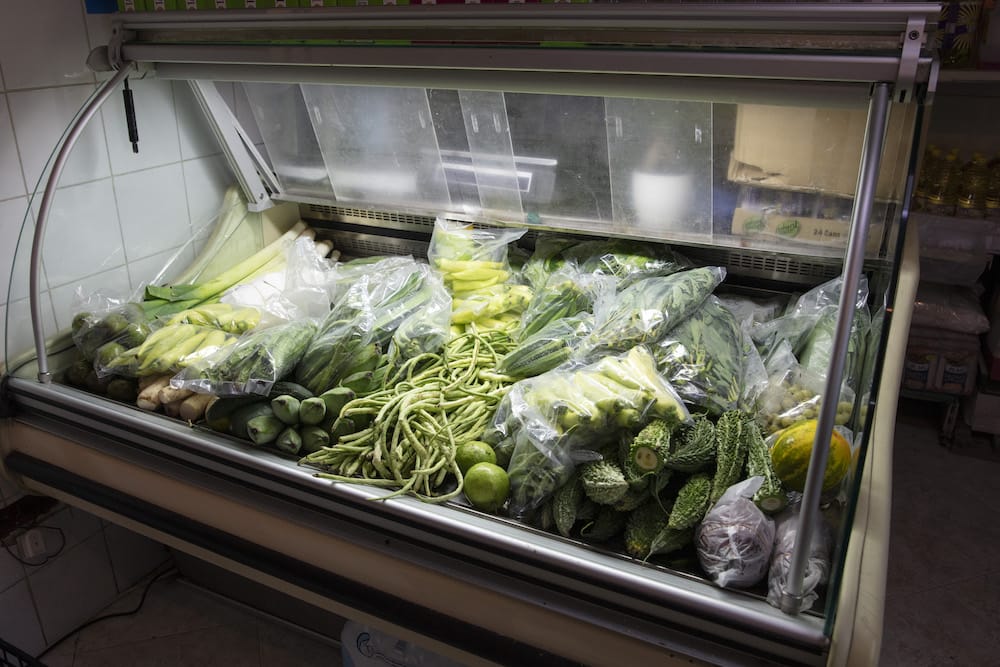
This being Naples, there is also a large informal underground dining scene: People selling rice and curry out of their kitchen to fellow Sri Lankans who hear about them through word of mouth. Turn a corner, ring a bell, hand the lady who opens the door €2.50, and you’ll get a bag with enough rice and curry to feed at least two people. Because they operate without a license, we can’t tell you exact addresses, but eat around, ask around, be nice to your Sri Lankan waiters and you’ll find them.
Like so many immigrants, Neapolitan Sir Lankans work much longer hours than the average Italian. As a result, their restaurants tend to be open every day, some from very early until quite late. The best time to try them, though, is Sunday around lunchtime. On that day, the special curries are cooked, like cadju curry, a comparatively mild festive cashew nut curry, dallo (squid) curry, or, if you are really lucky, kakuluwo, curried crab.
When it comes to feasting on Sunday, Sri Lankans and Neapolitans are not that different at all.
This article was originally published on October 29, 2019.
Tobias MuellerAmedeo Benestante
Published on December 09, 2022
Related stories
Dig into Naples’ many fried foods on our walk.
June 21, 2022
NaplesAfter a morning spent walking around the Fontanelle Cemetery, the oldest ossuary in Naples, and the Sanità market, we believe that we have created enough of a calorie deficit to face a fried pizza – the original pizza, born before the more familiar oven-baked variety, and a universally beloved dish in the Neapolitan cuisine –…
July 13, 2020
NaplesWhen Michelangelo made his Moses statue at the beginning of the 16th century, he found it so lifelike that some say he asked the statue, “Why don’t you speak?” Michelangelo’s Moses, which is now housed in a church in Rome, never said a word. But centuries later, in 2009 to be exact, a customer entered…
April 8, 2019
Naples | By Tobias Mueller
NaplesSome people might tell you that the patron saint of Naples is San Gennaro, a 3rd-century bishop who died as a martyr. But that’s not actually true. The patron saint of Naples is, in fact, Diego Maradona, the Argentinian-born soccer player who, in 1987, propelled Napoli to win the Serie A Championship (Italy’s top football…







































